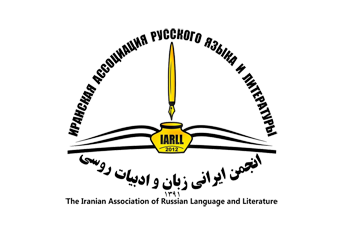HISTORICAL TOPONYMS IN LITERARY TRANSLATIONS OF ANCIENT TEXTS
DOI:
https://doi.org/10.61186/iarll.25.4Keywords:
Historical Toponyms, Translation, Rustaveli, Arabeti, KhataetiAbstract
In ancient literary texts encounters the names of countries and cities corresponding to those that actually existed in the era of creation of the works, but was artistically reinterpreted by the author. In Shota Rustaveli’s poem “The Knight in the Panter’s Skin” (12th century) these are the countries on whose territory the main plot takes place: Indoeti, Arabeti, Khataeti. The article examines the Russian translations of Arabeti and Khataeti in the context of the cultural and political situation of the region during the Rustaveli era. The comparative analysis showed that, in contrast to translations of the 20th century, translations created at the turn of the 20th-21st centuries provide a greater opportunity to understand the geographical space of the text. Domestication is fixed from two main positions: hermeneutical translation and correction with the modern geo-political map.
Extended abstract:
Historical toponyms, as a rule, cannot be translated directly but are transferred through transcription or transliteration. In the publication of ancient texts, this challenge is often addressed through supplementary materials such as notes and dictionaries, which provide readers with the necessary context. However, when translating literary texts, additional complexities arise. The modern reader often lacks the background knowledge required to fully grasp the artistic and historical space of the text, yet rarely consults dictionaries or lengthy explanations. Furthermore, ancient literary texts frequently feature names of countries and cities that, while rooted in historical reality, are artistically reinterpreted by the author. Translators often perceive these not merely as proper names but as artistic images, employing various strategies to convey their meaning. This is particularly evident in Shota Rustaveli’s 12th-century poem *The Knight in the Panther’s Skin*, where the names of the countries central to the plot—არაბეთი (Arabeti), ინდოეთი (Indoeti), and ხატაეთი (Khataeti)—serve as symbols of the world order, complicating their translation.
This article presents the results of a study examining the variability in translating the concepts of Arabeti (Arabia/ Aravia/ Land of the Arabs) and Khataeti (Khataeti/ Khatay/ China) into Russian. The analysis is based on poetic translations by K. Balmont (1933), G. Tsagareli (1937), P. Petrenko with K. Chichinadze (1938), Sh. Nutsubidze (1941), N. Zabolotsky (1957), G. Devdariani (2004), A. Kxalvashi (2015), and K. Gulisashvili (2023). Arabeti and Khataeti are examined within the cultural and political context of Rustaveli’s era, including the history of the Delhi Sultanate, the Great Liao Empire, the Kara-Khitay Khanate, and the Turkish Hatay. A cultural-historical analysis reveals that Khataeti is a migrant toponym—a “transferred name” resulting from ancient migrations. By analogy with Arabeti and Indoeti, Khataeti can also be understood as a derivative of an ethnonym, with the translation “Khatay” (meaning “country of the Khatai/ Khitan”) being closest to the original.
One of the key conditions for selecting an appropriate translation equivalent and strategy is a deep understanding of the text. Therefore, this study emphasizes the correlation between the variability of translation interpretations and the chronological development of scholarly understanding of the poem. Notably, nearly all translators of *The Knight in the Panther’s Skin* consulted Rustvelologists, and the evolution of interpretations of Arabeti and Khataeti in translations aligns with the progression of academic thought—from viewing them as historical toponyms to interpreting them as religious and philosophical concepts, and from literal translation to hermeneutical understanding.
The comparative analysis demonstrates that the translation of historical toponyms in Rustaveli’s poem reflects two main tendencies: hermeneutical translation and alignment with the modern geopolitical map. This study, conducted for the first time, highlights the challenges and strategies involved in translating culturally and historically significant toponyms, offering new insights into the interplay between translation, history, and literary interpretation.
Downloads
Published
How to Cite
Issue
Section
License
Copyright (c) 2025 Issledovatel'skiy Zhurnal Russkogo Yazyka I Literatury

This work is licensed under a Creative Commons Attribution 4.0 International License.
![]()
"Creative Commons Attribution 4.0 International (CC-BY 4.0)"


